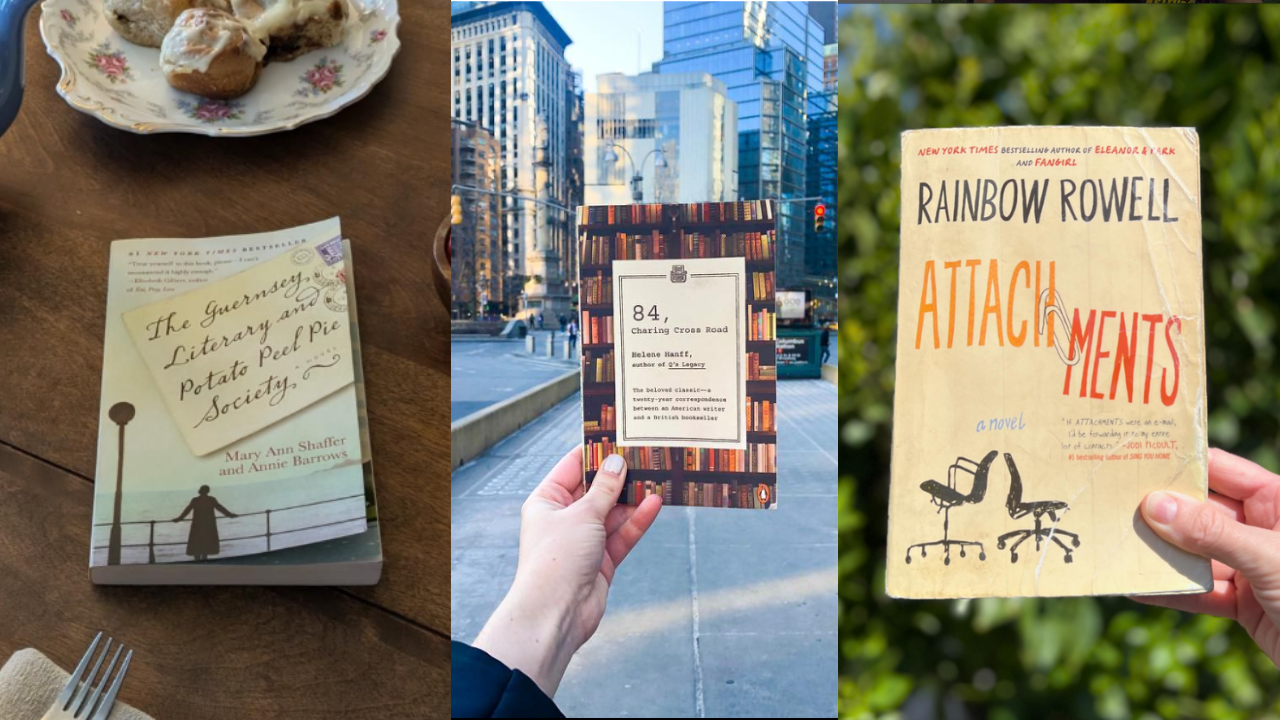Table of Contents

Using letters, emails, and texts to drive a story gives it a personal, intimate feel. You often get to peek into characters' innermost thoughts, building a connection with them in a unique way. Epistolary novels, stories told through letters or books that use digital communication create a modern touch that adds depth to the storytelling. Here are seven fascinating books that rely on letters, emails, and texts to tell their tales.
Also Read: 10 Romance Books That Will Break Your Heart and Then Put it Back Together
1. The Guernsey Literary and Potato Peel Pie Society by Mary Ann Shaffer and Annie Barrows
This charming historical novel unfolds entirely through letters exchanged between Juliet Ashton, an author, and the inhabitants of Guernsey Island post-World War II. As the letters are passed back and forth, you get a delightful glimpse into the quirky and resilient lives of these islanders. The letter format brings warmth and authenticity to the characters’ voices, making the story feel as though you’re reading personal correspondence from a dear friend. It’s a heartwarming tale about love, loss, and the power of books during difficult times.
2. Attachments by Rainbow Rowell
The story begins in the late 1990s, with emails as the main form of communication between two best friends, Jennifer and Beth, as they navigate life and love. Lincoln, an IT worker tasked with monitoring office emails, ends up reading their hilarious and heartfelt conversations. As he silently falls for Beth through her emails, Rowell creates a narrative that’s both charming and modern, with technology driving the romance. The humor and wit in the characters’ exchanges give the book a unique appeal, making you root for their happy ending even though they haven't met face-to-face.
3. 84, Charing Cross Road by Helene Hanff
Beginning with a simple inquiry about secondhand books, this real-life epistolary work documents the twenty-year correspondence between New York-based writer Helene Hanff and Frank Doel, a British bookseller at Marks & Co. Their letters, spanning across the Atlantic, transform into a deep, long-distance friendship filled with mutual respect and shared love for literature. What makes this book so endearing is its blend of humor, warmth, and the undeniable charm of an evolving relationship that is purely built on the exchange of letters.
4. Where Rainbows End (Love, Rosie) by Cecelia Ahern
Told through a series of letters, emails, and instant messages, this touching novel follows childhood best friends Rosie and Alex as they navigate life’s twists and turns. From missed chances to unspoken feelings, their correspondence tracks decades of their lives, filled with romance, heartache, and missed opportunities. Ahern captures the enduring nature of their bond through these written communications, creating a bittersweet love story that keeps readers emotionally invested in every message exchanged.
5. The Perks of Being a Wallflower by Stephen Chbosky
Chbosky's coming-of-age novel is composed of a series of letters written by the introverted protagonist, Charlie, to an anonymous friend. As the letters unfold, we’re drawn into Charlie’s world—his high school experiences struggles with mental health, and discoveries of love and friendship. The use of letters allows us to see the world entirely through Charlie’s eyes, making his story deeply personal. The vulnerability and honesty in his writing create a raw and emotional reading experience that resonates long after the final letter is sent.
6. Sita’s Ramayana by Samhita Arni
Arni reimagines the ancient Indian epic Ramayana through a feminist lens, using letters to give a fresh narrative voice to Sita, the protagonist. This graphic novel creatively combines traditional Indian storytelling with the epistolary format, allowing readers to explore the emotional depth of Sita’s story. The letters reflect her internal struggles, desires, and thoughts, offering a personal and intimate perspective on a tale that has been told for centuries. Arni’s blend of mythology and letters creates a unique narrative that bridges ancient traditions and modern storytelling techniques.
7. Dear Mr. Henshaw by Beverly Cleary
In this heartfelt children’s book, Leigh Botts, a young boy, writes letters to his favorite author, Mr. Henshaw. What starts as fan mail soon turns into an outlet for Leigh’s feelings about his parents’ divorce, his loneliness, and his journey of self-discovery. Cleary masterfully uses the letter format to reveal Leigh’s emotions and growth in a way that feels authentic and relatable for young readers. The simplicity of the letters contrasts with the deep emotions Leigh expresses, making this book both touching and insightful.

